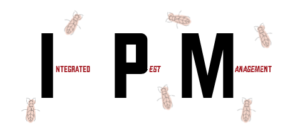Integrated Pest Management for Termite Control
 Integrated Pest Management (IPM) is an effective and environmentally sensitive approach to pest control that combines multiple strategies to manage pests sustainably. Rather than relying solely on chemical pesticides, IPM integrates biological, cultural, mechanical, and chemical controls to minimize risks to human health, beneficial organisms, and the environment.
Integrated Pest Management (IPM) is an effective and environmentally sensitive approach to pest control that combines multiple strategies to manage pests sustainably. Rather than relying solely on chemical pesticides, IPM integrates biological, cultural, mechanical, and chemical controls to minimize risks to human health, beneficial organisms, and the environment.
Integrated Pest Management (IPM) for Termite Control
Integrated Pest Management (IPM) focuses on controlling pests, such as termites, while minimizing environmental impact. Below are effective IPM techniques specifically tailored to termite prevention and management:
- Maintain Proper Home Maintenance
- Ensure your home is well-painted to protect wooden surfaces.
- Address excess moisture issues, such as leaky pipes or poor drainage, to deter termites.
- Clean gutters and ensure they’re free of debris to avoid moisture buildup.
- Fix plumbing leaks promptly.
- Install a vapor barrier in sub areas. Vapor barriers reduce the amount of moisture in crawlspaces. Moisture is the root cause of wood rot and termite infestation.
- Eliminate Wood-Soil Contact and Debris
- Remove stumps and wood debris from around your home’s perimeter.
- Use concrete to insulate patio posts, decking materials, and outdoor stairways to eliminate direct wood-to-earth contact.
- Maintain proper soil levels around your home to discourage subterranean termites.
- Use Termite-Resistant Building Materials
- Pressure-Treated Wood: This type of wood is highly resistant to termites and an excellent alternative to standard wood for outdoor applications like patio cover posts, fence posts, and stairways exposed to the elements.
- Borate Treatment: Pretreat replacement wood with borates before installation, especially in wall voids and other hard to reach areas, to provide long-lasting termite protection.
- Redwood for Aesthetics: If visual appeal is a priority, consider using redwood instead of standard lumber for pergolas, arbors and trellises. Redwood offers natural termite resistance while adding a touch of elegance to your outdoor spaces.
- Seal and Protect Vulnerable Areas
- Seal cracks in wooden surfaces with caulk or wood putty to prevent entry points.
- Use borate treatments to protect exposed wood in attics, crawlspaces, and garages.
- Screen vents and other openings to block swarming termites from entering.
- Proactive Repairs and Adjustments
- Repair or replace wood damaged by termites or fungus.
- Remove and replace any termite-infested furniture.
- Remove dead or infested trees from your property to prevent nearby infestations.
- Regular Inspections and Additional Measures
- Schedule routine inspections to catch termite activity early.
- Consider borate-infused attic insulation for added protection.
By implementing these strategies, you can effectively manage termite risks while safeguarding your home and the environment.
